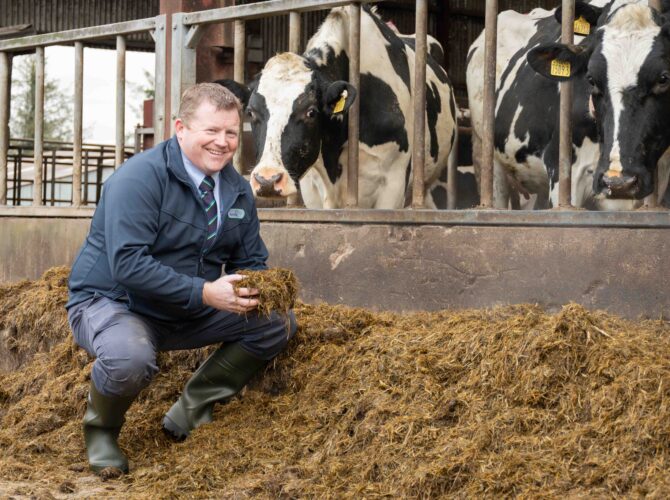A Smooth Transition Period is key for Lactation Success this Spring
19th January 2024

Fane Valley Feeds’ Dry Cow Primer rations have been redesigned to balance 2023 grass silages, ensuring a smooth transition to lactation. As a lot of farms have already started calving down Spring-calving cows and heifers, Matthew Armstrong Technical Support Manager at Fane Valley Feeds outlines some of the key factors to ensure dry cows transition properly achieving results which will help withstand current market pressure.
The biggest issue seem in grass silage based diets, is increased potassium levels which is the predominant cause of milk fever. Milk fever is one of the most common metabolic diseases that occurs in dairy cows in both clinical and subclinical forms. It is estimated that for each case of clinical milk fever, lactation yield can be reduced by up to 1400 litres, creating a huge financial impact from reduced milk yield alone. Clinical cases of milk fever are only the tip of the iceberg, for every one case of clinical milk fever it is suggested that there are up to 6 cases of subclinical milk fever which can lead to retained placentas, poor transition into lactation, metritis, mastitis, reduced feed intake, fatty liver syndrome and reduced fertility.
Body Condition Score
One of the best management tools to reduce metabolic issues is regular body condition scoring. Body condition score cannot be changed successfully during the dry period and should therefore be altered before drying off by physically assessing individual cows 8 to 10 weeks before planned dry off. Cows should be dried off at a BCS 3.0 and this should be maintained throughout the dry period.
Cows that are either too thin or too fat at calving can have higher rates of;
- Metabolic disease
- Lower feed intakes
- Lower milk production
- Poorer fertility
Nutrition
Dry cows should be fed to meet their energy requirements, and overfeeding energy should be avoided as it can lead to fatty liver syndrome and ketosis, causing lower feed intakes after calving. Adding straw to the dry cow diet can help to improve rumen fill and dilute both energy density and potassium intakes. It is vital that adequate feed space is available for all cows and feed is provided fresh on a daily basis.
The starting point of any dry cow diet is a full mineral profile of the forages to be used. Silages with high levels of potassium can cause problems with milk fever and subclinical milk fever, and if identified early, can be eliminated via nutrition, allowing a smoother transition to lactation.
Fane Valley Feeds Dry Cow Primer Nuts feature a mineral pack specifically designed for dry cows. The growing foetus and regenerating udder cells have a huge protein demand, at 24% protein and featuring a high levels of soya, Dry Cow Primer Nuts will ensure that this protein requirement of the cow is satisfied. The inclusion of anionic salts reduces the incidence of both clinical and subclinical milk fever by helping to offset the high potassium forages present on Northern Ireland farms.
If you would like to know more about Fane Valley Feeds Dry Cow Primer Nuts and options for managing the nutrient intake of dry cows, please contact your local Fane Valley Feeds Sales Representative or call Niall Faughnan on +353 83122 8729


